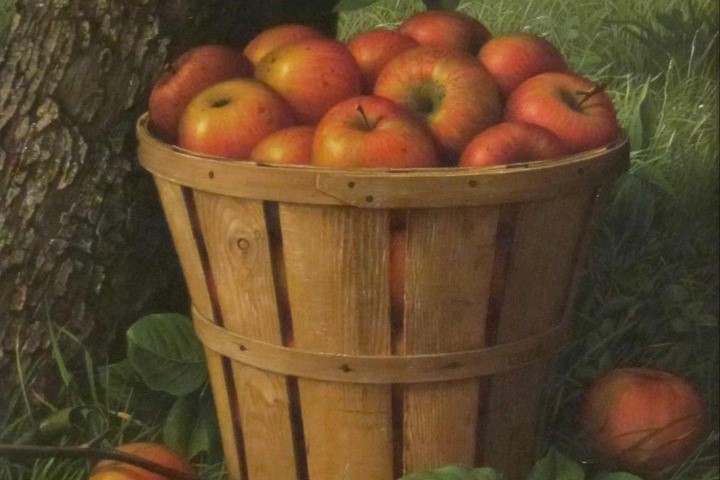
Today people often buy food in bulk to save money. A hundred years ago people also wanted to purchase food wisely. Here’s some advice in a 1915 home economics textbook:
For a large family with room for storage it is cheapest to buy supplies in quantity. There is, however, even for the small family a real saving in careful buying. For example, if certain package goods are offered for fifteen cents per package or two for twenty-five cents, buy two if they can be used. The two and one-half cents saved on each package may seem a small saving, but in terms of percent it amounts to sixteen and two-thirds percent, or one-sixth of the whole.
A penny saved is a penny earned, and when it is done by careful buying it is far more easily earned than if some sacrifice is made to save it. In buying canned goods a reduction is often secured by taking a dozen cans or a case at a time.
Frequently a whole basket of fresh fruits and vegetables such as peaches and tomatoes can be purchased for little more than the price of a small quantity. If a whole basket is more than is needed for immediate use, one can preserve the surplus by cooking or canning it.
Science of Home Making: A Textbook in Home Economics (1915) by Emma E. Pirie

That’s a beautiful painting to accompany your post, Sheryl. I will buy some things in bulk but with only two of us at home now I often prefer to buy smaller quantities.
I also really like the painting. I wasn’t familiar with the artist until I happened upon this painting in Wikimedia Commons. I then googled his name. Levi Wells Prentice is apparently best known for his paintings of baskets of fruit – and has many lovely paintings of a variety of fruits in baskets.
The fruit looks real enough to eat off the painting!
I’ll buy peaches and blueberries up to the limit of my freezer space, but otherwise I pass. I’m always tempted to put up tomatoes when they’re in season, but I don’t. Part of it’s being single, and part of it’s not wanting to have to leave behind great stores of food when it’s time for the next hurricane evacuation.
I know what you mean. It is always so difficult to know how much processed food we’ll be able to eat over the course of a year. My general philosophy is that if we go to all the work of processing something, that we should eat it during the winter months even if we are getting tired of it.
It is very good advice even now. I especially like it when the supermarkets figure out the unit price for the shopper.
It is so much easier now. To compare prices while shopping, we used to have to do so much more mental math.
Good advice. It’s hard work canning, of course.
You sound like someone in the middle of canning season. I know that we’ve been busily processing various fruits and vegetables.
It’s a job. Hot and tiring, but delicious to taste a bit of summer when the sun sets at 4 pm.
We’re already in apple season in the NC mountains. When our favorite kind is being picked at the local orchard, we’re going to buy as many as we can store in the refrigerator. We missed them last year.
It’s been a wonderful year for apples here, and our early apple tree was absolutely loaded with apples. My refrigerator is currently so filled with some of those apples that there is barely space for anything else. 🙂
An apple bumper crop — super!
I love reading these wise snippets from so many years ago. Still true today! Thanks for sharing with us.
You’re welcome. It’s nice to hear that you enjoy these posts.
I always buy in bulk if it is something I use or can pickle/freeze or make into jams or chutneys a habit I learnt from my mum and grandmother ..The old ways were the good ways in many instances 🙂 x
I agree! I also enjoy processing fruits/vegetables that I buy. There are a lot of great old-fashioned foods and foodways.
Good advice! I used to do at lot of buying in bulk,but now I have to learn how to back off … good thing we still have some animals around to eat the overkill until I get used to cooking for just three or four.🙂 love the painting!!
How I approach cooking definitely has changed now that my children are grown.